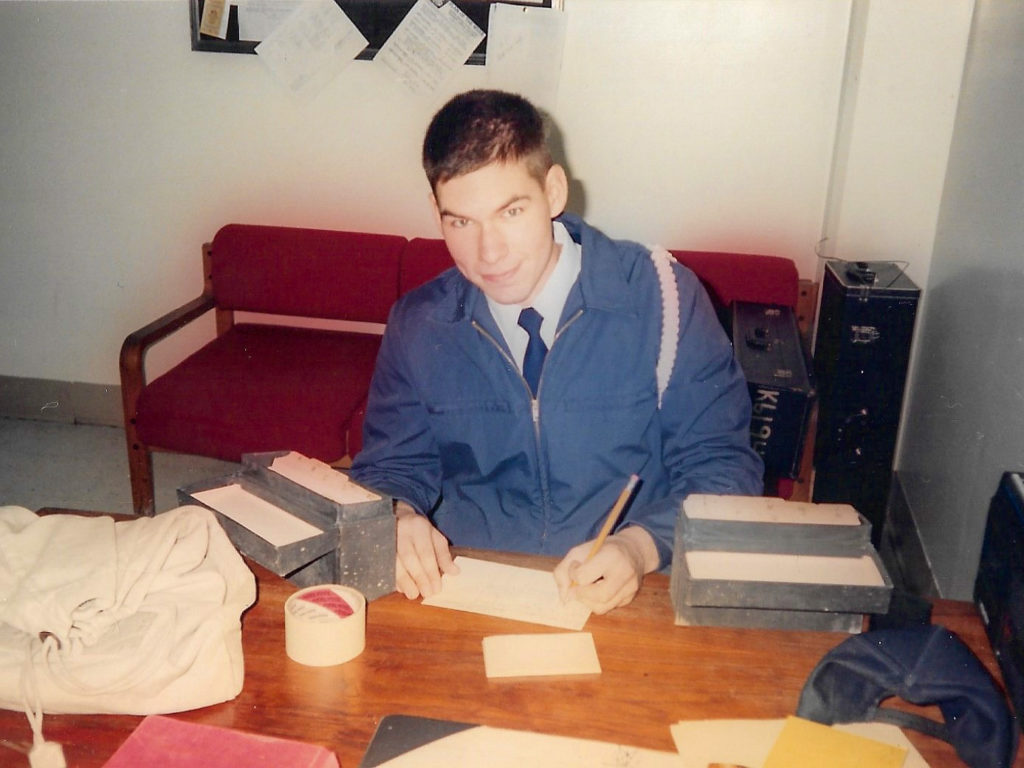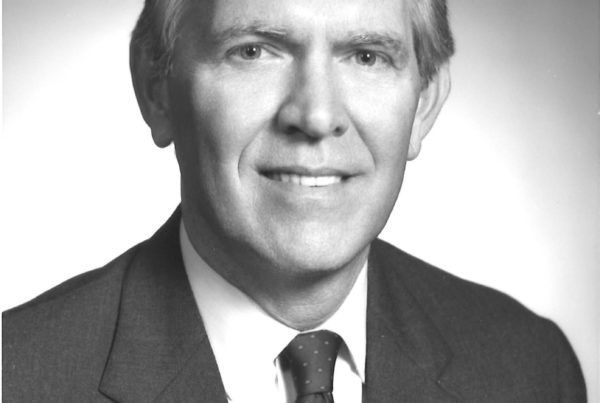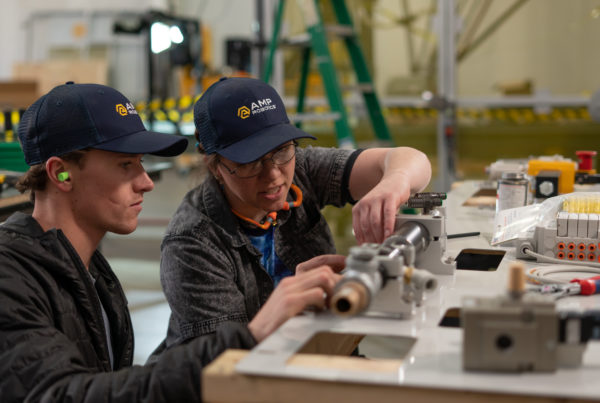Thoughts on Veterans Day and Recycling
This week’s Industry Voices was written by Dan Hockensmith, writer/editor in ISRI’s communications department.
On Veterans Day, I’d like to thank each veteran for having served in the United States Armed Forces. When I see a military veteran, I see a person who has combined love of country with a willingness to serve and sacrifice for the common good. Those qualities also are evident in the recycling industry. My job at ISRI largely is to tell stories about how the industry gives back.
Although I never saw combat, I am a veteran. I joined the Coast Guard after receiving my high school diploma. While the Army, Navy, Marine Corps, and Air Force (there was no Space Force back then), all had something to offer, what sold me on the Coast Guard was the core missions: search and rescue, protecting the marine environment, and enforcing federal law on our nation’s waterways, among other roles.
Shortly after graduating from basic training, I was assigned to a cutter theoretically homeported in Panama City, Fla. In reality, the ship had a ton of midlife maintenance issues, and we spent most of our time visiting shipyards up and down the East Coast. Two memories of that period, which coincided with the Gulf War, stick with me.

Following an extensive onload of needed supplies, the 80-person crew of USCGC Courageous completed a five-month engine overhaul in Portsmouth, Va. Imagine unpacking shipping containers and filling by hand an empty multistory office building with everything from pencils to heavy rescue equipment; torching a hole in the side of that building and winching out two diesel locomotive engines, generators, and associated machinery; then stuffing it all back in and bolting everything down. Suffice it to say our crew learned a lot about safety (hardhats and blind spots especially), organization, and logistics from that exercise.
The best sea story I have to tell occurred about one year later, when the Courageous was on its first official patrol in the Gulf of Mexico. Responding to an alert from a Coast Guard aircraft, we moved at full speed to a point roughly midway between Key West, Fla., and Cuba. We located three Cuban refugees clinging to a raft about the size of a coffee table made from repurposed car tire inner tubes. The men were dehydrated, sunburned, and starved after three days adrift. If we had arrived much later, the Gulf Stream would have carried them out into the Atlantic Ocean.
This mission involved plotting an intercept course; tracking a contact by radar and with binoculars; lowering, launching, and retrieving a small boat with three and later six souls on board; feeding, giving medical aid, and documenting the refugees; traveling back to Key West; and turning the Cubans over to immigration officials. At the time I spoke no Spanish, but you could see in their eyes and hand gestures how grateful those men were to be rescued. Our crew did everything right, and all of our equipment functioned flawlessly. I realized afterward how lucky I am to have been born in the U.S. and felt the pride that comes after you’ve done an honest day’s work and can see you’ve accomplished something, no matter how small it might seem.

Due to downsizing, when the Cold War ended, I concluded my military career as a seaman with three years of duty and drills in my service file along with an honorable discharge. I used GI Bill money to help pay for college, and I’m very thankful that I spent time in uniform before I went to school. It made me a better student and a more aware and involved citizen.
What can a veteran bring to the recycling industry? Plenty. They’re used to getting up early and working odd hours. They know training and drills never end. All have undergone some form of safety or survival education (troops are expensive assets to replace). Vets have experience using old and new technologies. They assess situations and make decisions. They work well under pressure and know how to improvise. Veterans are team players. They are loyal to leaders who take care of them.
Vets tend to have leadership experience out of proportion to their age. At 20, I managed two paint lockers—one ashore—the other afloat, holding a couple hundred gallons of supplies. I wrote material safety data sheets and purchase orders until my fingers were numb. The average American likely doesn’t realize the billions of dollars’ worth of equipment and material that young people are given responsibility for by the military. Just like the average citizen probably thinks “recycling” is entirely contained in the stuff inside the bin they place at the curb once a week.
It’s not all flags and parades on Veterans Day. The Department of Veterans Affairs reports nearly 20 veterans take their own lives each day. In its one-night-a-year random headcount of homeless people, the Department of Housing and Urban Development tallied more than 37,000 homeless vets in 2020. Veterans face all of the physical and mental problems that plague the general population—and some that are unique, like exposure to radiation and toxic chemicals not usually encountered in the civilian world.
There’s a public service announcement the VA dreamed up around the time I was born: “Don’t Forget. Hire the Vet.” That’s a good start, but there’s so much more you can do to help. Here are just a handful of the organizations that help veterans and their families. Google and your nearest VA office can help you find more.
- Bob Woodruff Foundation: various programs.
- Fisher House Foundation: temporary lodging for families near military hospitals and VA medical centers.
- Gary Sinise Foundation: various programs.
- Operation Homefront: Veteran Caregiver Support.
- Pat Tillman Foundation: scholarships for service members, veterans, and spouses.
The Recycling Education and Research Foundation (RERF) offers a stipend of up to $8,000 to military veterans. The stipend covers $2,000 per year and is renewable for up to 4 years or the length of study, whichever comes first. Applicants must be U.S. citizens, have served 2 years active duty or 4 years reserve in a branch of the U.S. military, and have been honorably discharged.
According to the Census Bureau, there are 18 million veterans in the United States. That’s 18 million fellow citizens who learned to work side by side with others, regardless of race, gender, geographic origin, ethnicity, religion, and economic status, as well as mental, physical, and attitudinal capabilities. They likely have proven their mettle in mission-critical situations demanding endurance, stamina, and flexibility.
This Veterans Day let’s pause and reflect on the meaning of service. In our industry, “service” can signify anything from maintaining a piece of equipment to fulfilling a contract to giving back to our communities. I just read a fine essay by Aaron Jackson, an Army vet and Ph.D. candidate at the University of California, San Francisco. He urges readers to create communities worthy of our veterans’ sacrifices. On Veterans Day, I’ll be reflecting on how to achieve that. I hope you will, too.
Featured image courtesy of Dan Hockensmith. Caption: Seaman Dan Hockensmith poses with a Coast Guard HH-65 Dolphin helicopter aboard USCGC Courageous, August 1991. Body image 1 courtesy of Todd Trapani from Pexels. Body image 2 courtesy of Dan Hockensmith. Caption: Seaman Apprentice Dan Hockensmith doing paperwork at Coast Guard Training Center Cape May, N.J., December 1989.










